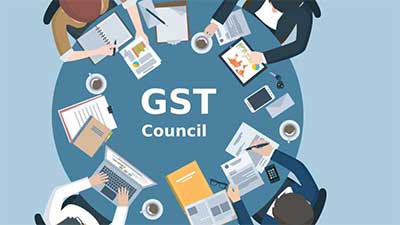Relevance: GS– 3: Indian Economy
Why in News?
With an aim to correct the inverted duty structure for textiles and footwear under the GST regime, the Finance Ministry has notified a uniform 12 per cent rate for man-made fibre (MMF), yarn, fabrics and apparels, along with a 12 per cent uniform rate for footwear.
An inverted duty structure arises when the taxes on output or final product is lower than the taxes on inputs, creating an inverse accumulation of input tax credit which in most cases has to be refunded.
This often results in cash flow problems for industry as the higher amount of duty paid on inputs remains unutilised or blocked.
More on the News:
- Inverted duty structure has implied a stream of revenue outflow for the government prompting the government to relook the duty structure. For footwear, the government estimates peg the refunds to be around Rs 2,000 crore in a year.
- At present, tax rate on manmade fibre, yarn and fabrics is 18 per cent, 12 per cent and 5 per cent, respectively. Apparel and clothing up to Rs 1,000 per piece currently attracts 5 per cent GST.
Issues with Inverted Duty Structure:
- Businesses paying taxes under this structure continue to have Input Tax Credit in their ledger even after paying off the output tax liability, leading to crucial working capital remaining stuck in the form of credit.
- Experts broadly agree that the structure currently raises the cost of procuring input goods, which makes manufacturing more expensive, and higher costs ultimately makes businesses less competitive
- The current system also incentivises the export of raw materials and not value-added products, something that the Centre has been trying to change
- From the government's standpoint, because of the current anomaly, many administrative-level issues have cropped up. A complicated refund process under GST creates additional compliance requirements and finally leads to more cost of compliance. This way, the inverted duty structure has caused refund-related issues under the GST regime.
- The GST Council had taken the decision to correct the inverted duty structure for these two categories in its meeting in September, with the changes to be effective from January 1, 2022.
Goods and Services Tax (GST)
- It is a comprehensive, multistage, destination-based indirect tax.
- The tax came into effect from 1 July 2017 through the implementation of the One Hundred and First Amendment of the Constitution
- At present, Goods and services are divided into five different tax slabs for collection of tax: 0%, 5%, 12%, 18% and 28%.
- However, petroleum products, alcoholic drinks, and electricity are not taxed under GST.
- There is a special rate of 0.25% on rough precious and semi-precious stones and 3% on gold.
- Moreover, taking note of the revenue trend dipping below the revenue neutral rate levels, the GST Council will now be looking at a series of measures including rate rationalisations to correct the inverted duty structure and the overhauling of the rate structure going ahead.
Sources:







